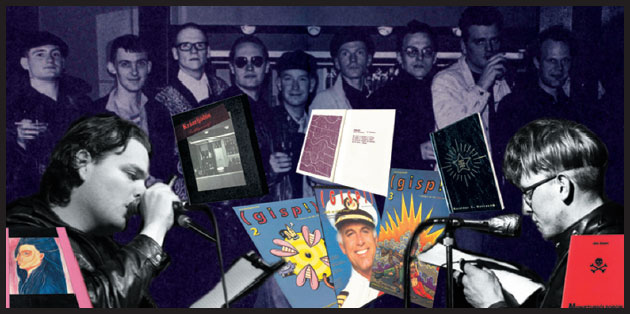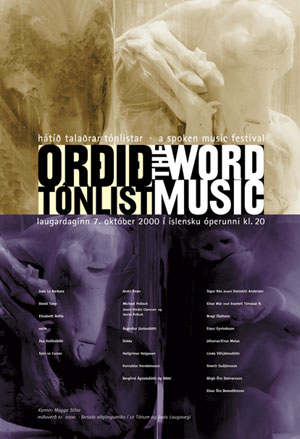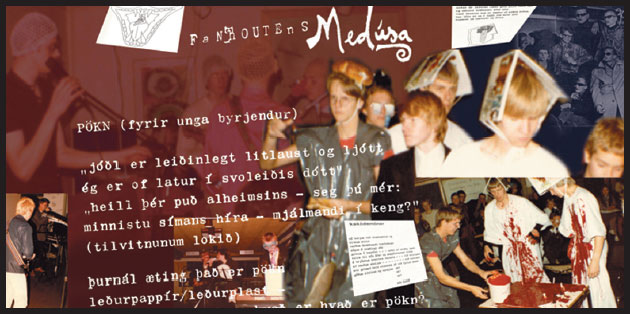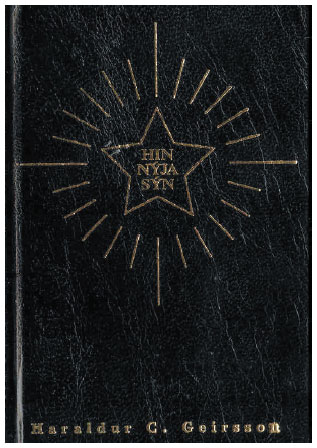

“Ofelía has infected me with this postmodern
sickness”, says Siggi in Byggingin (The Structure). He doesn’t
know any manners any more, and all over the place there are robots in
glass cages who try to control his behaviour; they order him to flush
the toilet, for instance. The Structure is a novel by Jóhamar that
Bad Taste published in 1988 - a year later they followed it up with Jón
Gnarr’s Midnætursólborg (Midnight Sun City). Those
were good days. One alternative work after another, and when I look back,
that for me is the most memorable period of Bad Taste’s output.
I acquired a whole new faith in Icelandic literature; as a university
student I was of course totally preoccupied with everthing that wasn’t
middle of the road. Actually at the time I was obsessed with the Medúsa
group, and stated straight out that Bad Taste was some sort of heir of
Medúsa. And then wrote a learned piece in Ársrit Torfhildar
(the literature students’ magazine) where I compared the poems of
the Medúsa poets to the Sugarcubes’ texts and claimed to
find some similarities.Can’t forget Kráarljó›in
(The Tavern Poems) either; that’s where the connection between Medúsa
and Bad Taste became beautifully clear, as lots of the poets were former
Medúsa members. I pull all this out to emphasize how much Bad Taste
is a multimedia enterprise.
1991. I’m writing a BA thesis. Which of course was supposed to be
the BA thesis to end all BA thesis (and was, too). The main focus of the
thesis is the writings of Sjón; then I brought in the two Bad Taste
novels and Kristín Ómarsdóttir’s short story
collection Í ferdalagi hjá flér (On a Trip with You).
The theme is eroticism, and I thought I was really avant-garde and fearless
- I read Story of the Eye to pieces, The Story of O, the Marquis and more
along that line, became exceedingly educated in pornographic literature,
and felt in my essence as spokesperson for these marginal works. (And
got what I paid for; to this day I still get email and phone calls requesting
me to express my views on pornography - me, who completely fell off the
bandwagon after The Correct Sadist, and hasn’t read anything cruder
than a Britney Spears lyric for a long time.)
2003. Twelve years later I sit down at the computer to write about these
Bad Taste novels, which have aged
well, both in my memory and in re-reading. Both stories take place in
the future, and show the influence of Burroughs, cyberpunk and other dystopic
science fiction; in both instances an interesting attempt is made at imagining
Reykjavík as a rough-edged international city, in a wreck after
unnamed horrors, pollution, war. The Structure tells the story of Siggi
and Ófelia. Siggi is unlucky enough to have recently discovered
“that he was a mortal man, one of a few. Earthlings had basically
stopped dying because of unexpected progess in the chemical industry.”



